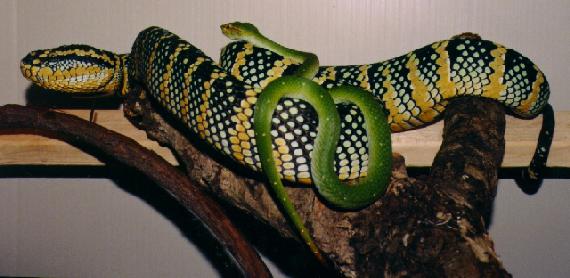kevyn
Very Well-Known Member
These are 2 month old Malaysian Wagler's Temple Pitvipers. They were bred by my friend in Malaysia. I'm looking forward to seeing their colour change.
female

Male

female

Male





are you getting them?
there got giant heads can they eat massive prey cause of the size of there head
They're nice looking animals Kevyn,can you get the yellow eyelash vipers
if their not that venomous would you handle it? its different in australia. its either non venomous, slightly venoumous or really venomous
how big r these things
Enter your email address to join: